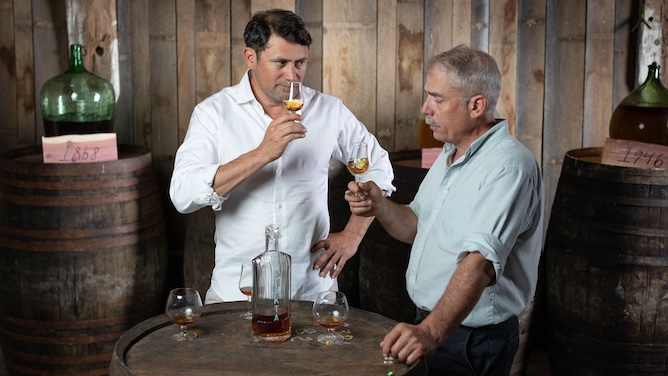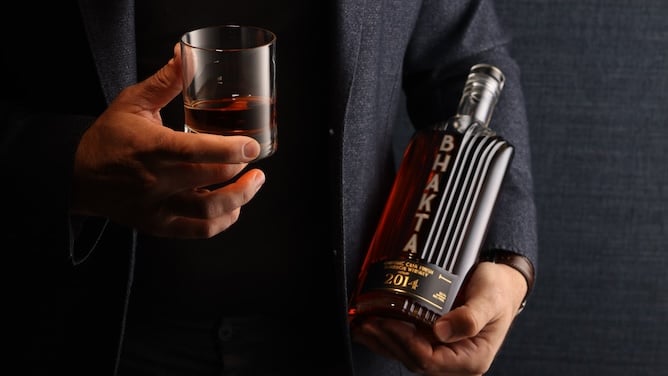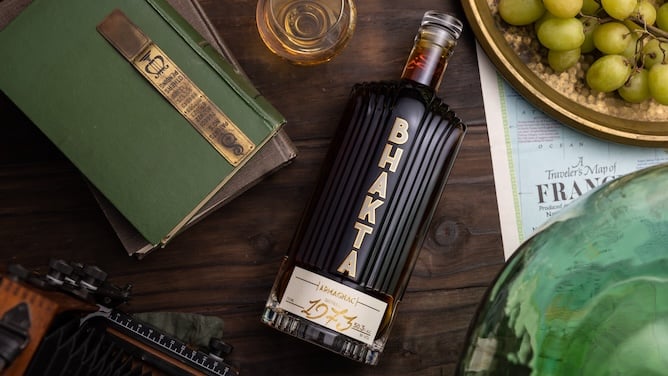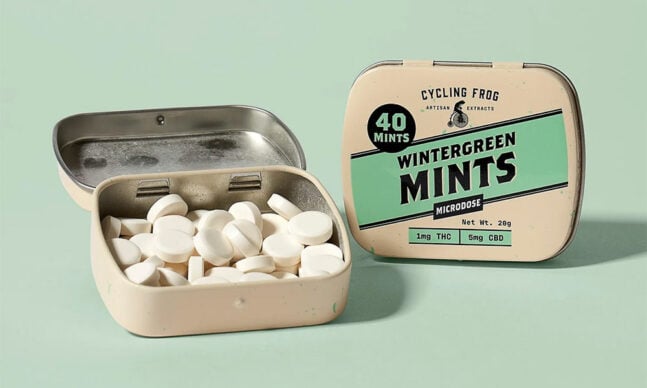Raj Bhakta, a founder of WhistlePig and the force behind BHAKTA Spirits, unabashedly declares that his mission is to craft the finest libations money can buy, and he’s not afraid to occasionally ruffle feathers in this lofty pursuit. But even Bhakta was taken aback by the furor after he purchased the world’s largest collection of Armagnac and announced his designs for the treasured French spirits: blending them with whiskey.
“The French old guard had an apoplectic fit,” he says, puffing on his cigar. “My cellar master nearly quit, he was so horrified that I was taking ancient spirits—the oldest spirits on earth—and doing things like aging them in Scotch casks and mixing them with rye and bourbon,” he tells me. “Some did grudgingly concede that the Armagnac industry needed shaking up, and that maybe it would take a crazy American in cowboy boots to do the job.” Then with a gleam in his eye: “And they shut up when they tasted my blends.”
You should blend spirits the same way you choose friendships
Armagnac, like Cognac or grappa, is in the brandy family, meaning its base is grape distillate. The first documented Armagnac production dates back to 1310, making it the oldest French brandy. Initially transparent, the distillate picks up color—a range from light straw to mahogany and amber—and flavor from aging in oak barrels. While Cognac is distilled three times, Armagnac is traditionally only distilled once. Often, it sits in barrel for long stretches of time, yielding a complex spectrum of flavors. Terroir variations between Cognac, a coastal enclave, and Armagnac’s homeland of Gascony, a mountainous inland pocket, further heighten character differences between the two storied French brandies.
While aristocrats, monarchs, and gourmands have long coveted Armagnac, geography and politics ultimately conferred greater international prestige to Cognac. “The region of Cognac was historically connected to Bordeaux, one of France’s busiest ports,” Bhakta explains. “It was much easier to ship Cognac than Armagnac, which comes from a rugged, landlocked section of France. Also, Bordeaux was under English influence for much of its history, and the English, always attuned to their mercantile instincts, saw an opportunity to market Cognac in their overseas markets.”
While Cognac became synonymous abroad with Francophile luxury and sophistication, with high price tags and high production numbers to match, the much smaller amount of Armagnac made largely remained in the country. That continues to be the case today. According to Forbes, 2 percent of Cognac is consumed in France versus 50 percent of Armagnac.

Armagnac is still a minor category in the United States. That said, there are aficionados and purists who cherish the high quality of old Armagnac available at relatively affordable prices. After controversies at WhistlePig that became public in 2016 eventually led to Bhakta splitting from the company, Bhatka set his sights on French spirits. He found a cache of Armagnac dating back to 1868 at a French chateau, and then moved those barrels to the Green Mountain College campus, a Vermont college that Bhatka purchased in 2020 after it closed.
The goal for these incredibly rare and old French brandies? Create a perfect Armagnac-whiskey blend.
Bhatka likens blending Armagnac and whiskey to an alliance between unlikely buddies—one suave and light-hearted, the other fiery and brash. The contrasts in personality work together symbiotically, allowing the partnership to surpass the sum of its parts. “You should blend spirits the same way you choose friendships,” Bhakta tells me. “If you’re too smooth and refined, you risk becoming boring and need companions with boldness of character to balance you out.”
Like the camaraderie between a French bon vivant, slightly effete but exquisitely refined, and a Southern good ol’ boy, rough around the edges yet deceptively deep, Armagnac and whiskey bring out the best in each other.
Armagnac elevates both the texture and flavor of whiskey. BHAKTA’s older vintages, many barreled over a century ago, are silky smooth on the palate–a mellowing counterbalance to the heat of rye or bourbon. The classic tasting notes of old Armagnac (chocolate, candied fruit, and white flowers) harmonize gorgeously with bourbon’s vanilla and caramel undertones or rye’s spicy kick. In some blends, like BHAKTA 1928, a hit of Calvados, a French brandy made from apples or pears, infuses a touch of fruity lusciousness into the blend.
Sip BHAKTA blends neat the first few times to savor the sublime symphony between world-class whiskey and ancient Armagnac. If you have a penchant for drinking whiskey with rocks, add a few cubes to the glass as you would with a pour of good bourbon or Scotch. For an explosively aromatic treat, pair BHAKTA’s blends with strong cheese. The fruit flavors of the Armagnac and the whiskey’s bite match wonderfully with the umami savoriness of pecorino or the funky delight of Gorgonzola.
BHAKTA’s blends are magic in whiskey-based cocktails like Manhattans or old-fashioneds. The 100-Year-Old-Fashioned, made with BHAKTA 1928, is a luxury cocktail par excellence. “If you want to impress your date with your level of spirits connoisseurship, skip Cognac and go with Armagnac,” Bhakta says. “With Cognac, you pay for the label. You might as well order an over-the-top tequila. But with Armagnac, you’re getting every penny of your money’s worth.”

BHAKTA 1928
Buy it like it’s the heyday of the Roaring Twenties and drink it like it’s Black Friday, 1929. The blend’s name and the Art Deco design of the bottle are homages to the boundless joie de vivre of the Jazz Age. Fittingly, the oldest Armagnac in the blend was barreled in 1928. For Bhakta, this bottle is his magnum opus thus far as a spirits-maker, the most complex spirit he has ever crafted. “Bhakta 1928 is cheaper than it should be given the Calvados and ancient Armagnac we use, but we priced it affordably to pique interest in Armagnac among those unfamiliar with it,” Bhakta tells me. Small-batch rye constitutes the blend’s base, and as you would expect given Bhakta’s pedigree at WhistlePig, the whiskey is superb. The medley of Armagnac vintages shines through in the nose—faint whiffs of gardenias and cacao mingled with the rye’s baking spice and pepper aromas. A small amount of Calvados adds a cushion of sweetness and sparkles of freshly sliced apple. For rye lovers, this baby will be the crowning jewel of your bar cart.
Buy: $69
BHAKTA 2014 Bourbon
A throwback to bourbon styles of yore, the juice in the BHAKTA 2014 Bourbon is 99 percent corn based, giving the spirit a tinge of creamy sweetness. After aging in American oak barrels, Bhakta 2014 sits in French oak barrels that once held his 1973 Armagnac vintages, one the most legendary years on record for Armagnac production.
Buy: $149
BHAKTA 1973
BHAKTA 1973 Armagnac is a splurge-worthy bottle for those looking to experience Armagnac in its highest expression. Bhakta will tell you that BHAKTA 1973 is one of the best vintages in his collection—and, by extension, one of the finest vintages in the world. The vintage is sans whiskey, but sipping the 1973 will help you appreciate the delicious dance of whiskey and Armagnac in BHAKTA’s blends.
Buy: $349



